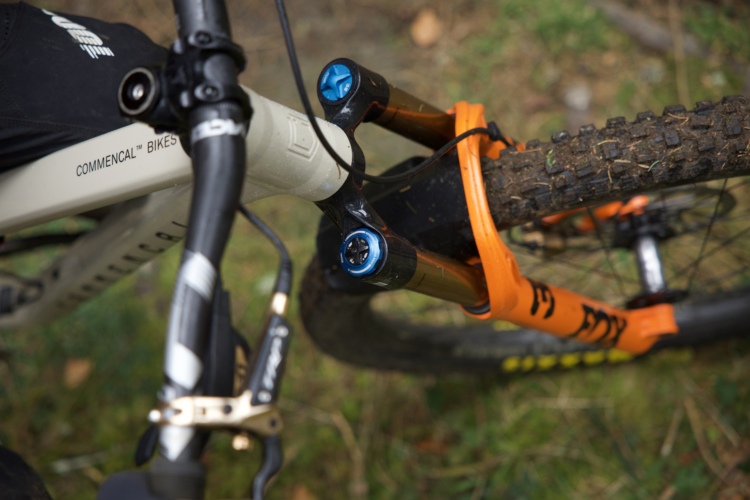
With a name like High Roller, it had better be good. Should anyone throw all the chips down on this one mid-conditions tire? Let’s discuss.
This thrice updated tread pattern from Maxxis only has eyes for gravity riders with its Shorty-esque tread pattern wrapping one 27.5″ option and three 29″ combinations. The lugs are wide spaced for clearing slop and the brand recommends this refreshed design for front or rear applications. So, we mounted it under the saddle and bars accordingly.
Maxxis High Roller key specs
- 27.5×2.4″ is only available in DH casings and Maxxgrip tread compound
- 29×2.4″ is available in Double Down, DH, or EXO+ casings with Maxgrip tread on the heavier two and 3C Maxxgrip on the EXO+ casing
- Weight: about 1,300g (29 x 2.4″ DD/Maxxgrip tested)
- Price: $105
- Buy from Jenson USA

Summit bound
Some gravity tires make great overall trail companions, provided there’s a little extra effort from the pilot. The Schwalbe Magic Mary and Maxxis Minion DHF come to mind first, though there are many grippy “enduro tires” meant to be pedaled uphill.
I wouldn’t place the latest Maxxis High Roller in that do-it-all category. These tires felt notably soul-munching on any climb over 30 minutes long. The soft tread, combined with heavy rotational weight, stands out as some of the most sluggish rubber I have ever pedaled. I’m a turn-earner most days, and there’s a raft of better options for daylong adventure tread. I’m currently on a fresh set of WTB gravity tires with similar weights but rubber that’s a tad harder and I feel significantly better atop the slope. I’m no materials chemist, but I can say that Maxxgrip doesn’t feel great wrapping both of my wheels.

And down
Okay, enough whining. The High Roller tread is designed for gravity, which isn’t a word our industry associates with climbing. On the way downhill, this tire employs all the Velcro clichés you can dish out. Braking control is fantastic, with predictable traction-release when you want to drift a bit and stable performance in ruts and off-camber sections. I found some chunder for the tires to taste and they felt great under my straight-line attempts to let the bike work and smash forward.
Leaned over, the High Roller lugs have a smooth transition that’s a massive improvement to the harsh “oh no where did my bike go?” sensation that I felt with the previous iteration of this tire. I’m able to push into corners to redirect or pump without a worry that the grip will persist. Across the board, this tread compound and pattern take kitten claws to the Earth.
I’ll be a bit cavalier here: you probably don’t need to carry a tube with casings this tough. I genuinely tried to flat these tires and couldn’t get the sealant to hemorrhage no matter how pointy the stone.
While excellent at puncture protection, the DoubleDown casings also feel fantastic in harsh compressions and fast corners. They allow the tire to stand tall even with low pressure, preventing the dreaded squirm that’s felt right before you high-five the ground. I’m happy to pedal the heavier casing uphill in trade for these benefits, but I’d love to see Maxxis offer a more durable compound for a rear tire.
Share your Maxxis High Roller review
Pros and cons of Maxxis High Roller
Pros
- Super grippy in most conditions
- Great lug transition to the shoulders
- DoubleDown casing is as bombproof as ever
Cons
- Expensive (but all tires are today)
- Soft tread wears fast and might wear you out on climbs
Bottom line
For loose or muddy trails, the Maxxis High Roller is a fantastic choice, offering mega grip under the bars. Paired with a more efficient tire out back, the tread will last a few months (ride-frequency/trail-tread/brake-usage dependent) and you’ll be hard-pressed to find a claw that grabs the earth with more tenacity. Alternatively, if you want a DH-only race tire for ultimate grip front and rear, you may have found it.





















2 Comments
Oct 19, 2024
Oct 24, 2024